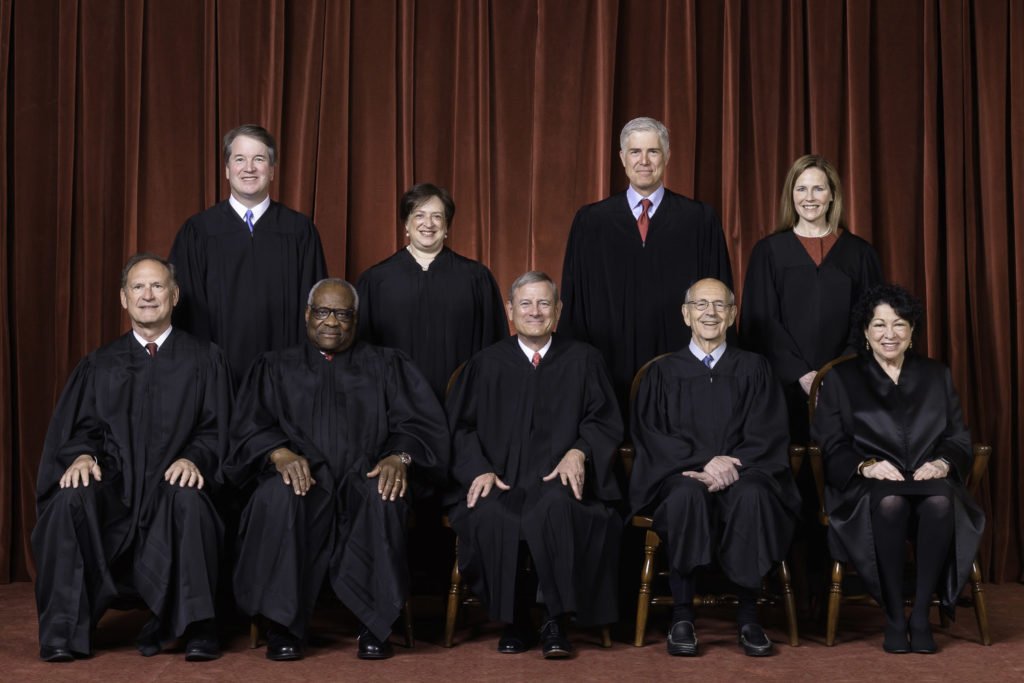Key Data Points Throw Wrench In Dems’ ‘Partisan’ Supreme Court Narrative

- Fourteen decisions split the justices 6-3 along ideological lines last term, while only five cases did the same during the 2022-2023 term, according to data compiled by Adam Feldman and Jake Truscott.
- Justice Jackson voted in the majority 84% of the time, more than the liberal justices did last term and more than Justices Clarence Thomas, Samuel Alito, Neil Gorsuch, Sonia Sotomayor and Elena Kagan did this term.
- “In general, the voting patterns for any given term are more a function of the mix of cases heard that term than they are any change in the orientation of the Court or the approach of individual justices,” Case Western Reserve University School of Law Professor Jonathan Adler told the Daily Caller News Foundation.
While the Supreme Court delivered major conservative victories in the final days of this term, voting patterns reveal the Court was not as unflinchingly conservative as its critics claim.
After the Supreme Court released major rulings overturning affirmative action and striking down President Joe Biden’s student loan forgiveness plan, Democrats again began advocating for court packing, term limits and a code of ethics for the justices—calling the Supreme Court “MAGA,” “illegitimate,” and, as Biden said, “not a normal court.” Yet only five cases split the justices 6-3 along ideological lines during the 2022-2023 term, the smallest amount in any of the past six terms and less than the 14 cases with the same split last term, according to data compiled by Adam Feldman and Jake Truscott, who conduct statistical analysis of the Supreme Court on the website Empirical Scotus.
“Just over a week ago, before the affirmative action decision…the general narrative was, wow, this Court is all over the place,” Manhattan Institute Constitutional Studies Director and Senior Fellow Ilya Shapiro told the Daily Caller News Foundation. “The last handful of cases didn’t change that statistical pattern.”
Justice Jackson voted in the majority 84% of the time, more than the liberal justices did last term, according to Feldman and Truscott. She was also in the majority more than Justices Clarence Thomas, Samuel Alito, Neil Gorsuch, Sonia Sotomayor and Elena Kagan.
Justice Brett Kavanaugh, Chief Justice John Roberts and Justice Amy Coney Barret were in the majority most frequently, at 96%, 95% and 91% of the time, respectively, per Feldman and Truscott.
“In general, the voting patterns for any given term are more a function of the mix of cases heard that term than they are any change in the orientation of the Court or the approach of individual justices,” Case Western Reserve University School of Law Professor Jonathan Adler told the DCNF. “This is because the cases heard in a single term are never fully representative of the range of issues that can come before the Court, and this is more true than ever given the decline in the number of cases the Court is hearing each term.”
“So if we compare this term to last term, the Court’s ideological orientation has not changed meaningfully, but the Court did hear a different mix of cases, and given the issues in those cases the voting patterns were different,” he continued.
Supreme Court Stats. This term the Justices’ frequencies in majority were
Kavanaugh 96%
Roberts 95%
Barrett 91%
Jackson 84%
Gorsuch 82%
Sotomayor 82%
Alito 80%
Kagan 80%
Thomas 76%For much more see this statistical summary from me and @JakeTruscott_44 athttps://t.co/euSF76zd1T
— Dr. Adam Feldman (@AdamSFeldman) June 30, 2023
Justice Neil Gorsuch broke with the conservative majority to side with the liberals in a case on the Navajo Nation’s water rights. Chief Justice John Roberts and Justice Brett Kavanaugh Kavanaugh also joined the three liberal justices to form a 5-4 majority in striking down Alabama’s congressional district map as a violation of the Voting Rights Act.
An unusual majority also shot down the “independent state legislature theory,” the idea that legislatures have unrestricted constitutional authority to administer federal elections without review from state courts, in a 6-3 ruling in Moore v. Harper. Chief Justice John Roberts’ majority opinion was joined by Justices Sonia Sotomayor, Elena Kagan, Brett Kavanaugh, Amy Coney Barrett and Ketanji Brown Jackson.
Other high profile cases gained unexpected unanimous support. All nine justices sided with a Christian postal worker in Groff v. DeJoy, ruling that employers cannot deny a religious accommodation unless it would result in “substantial increased costs.”
In Sackett v. Environmental Protection Agency (EPA), the justices unanimously rolled back the EPA’s authority to regulate under the Clean Water Act (CWA), delivering a victory for a couple prevented by the EPA from building a home on their own land near Priest Lake, Idaho.
Additionally, in cases that did split along the predicted ideological lines, polls show Americans are evenly split on the outcome or mostly…
Read More: Key Data Points Throw Wrench In Dems’ ‘Partisan’ Supreme Court Narrative

